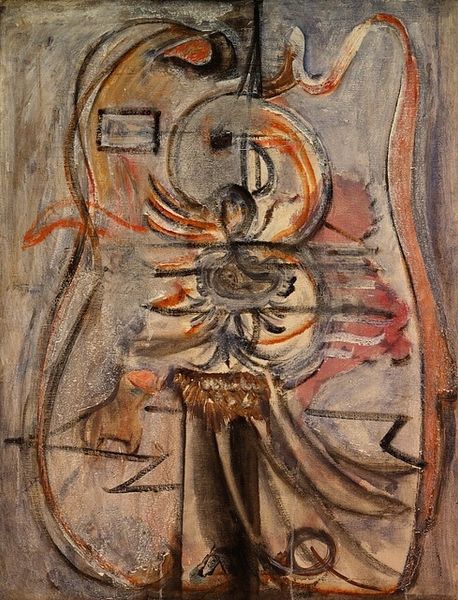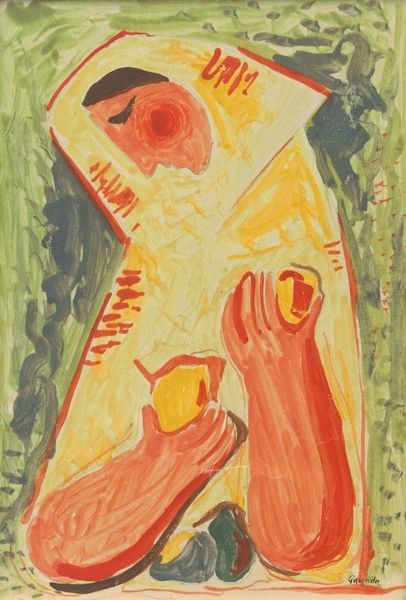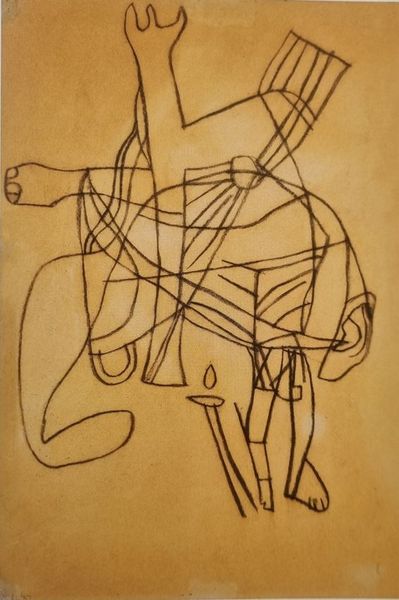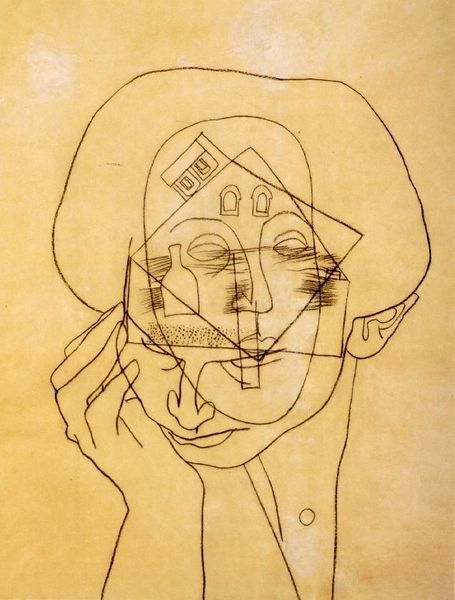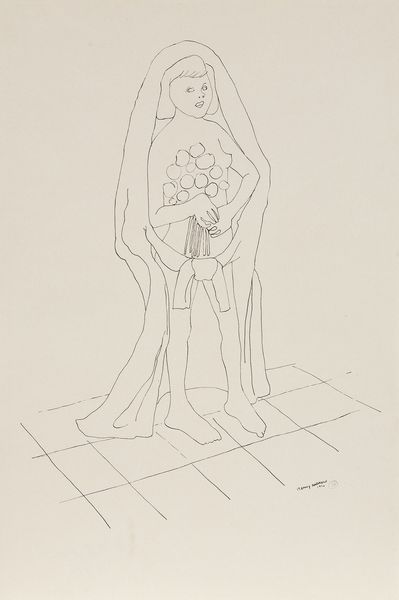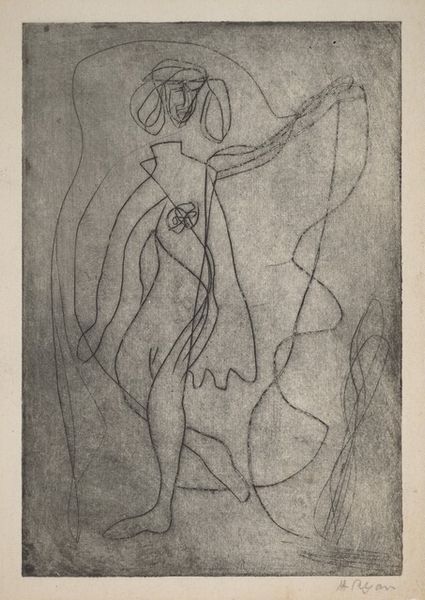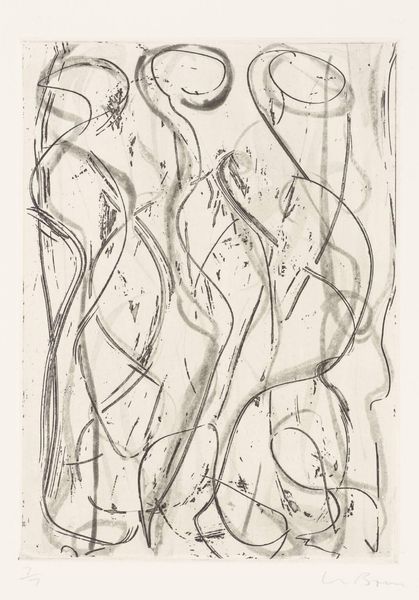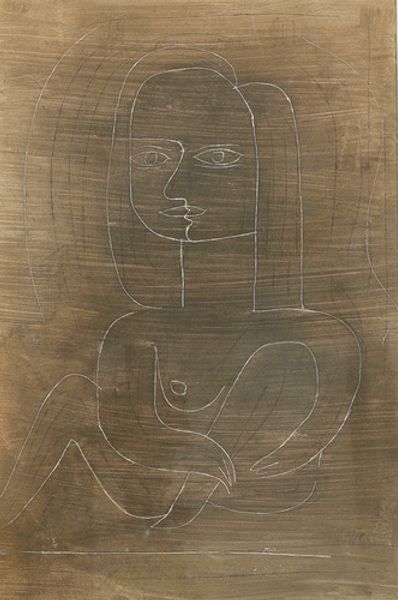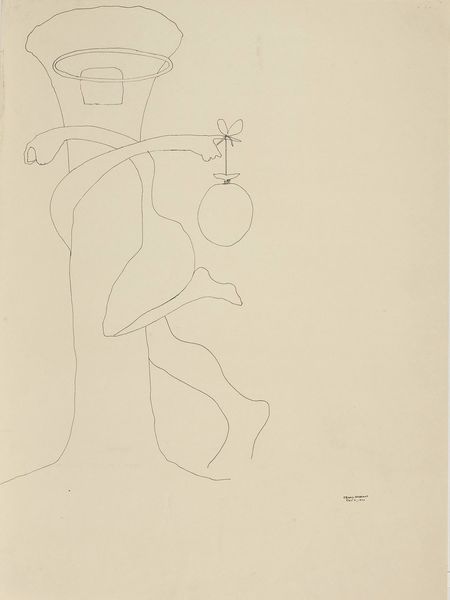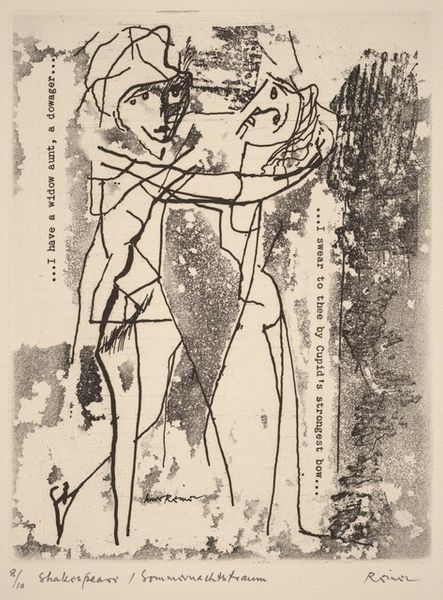
Vajda Lajos Fekete Arcu Krisztus Alak,1937, Szén and Pencil on Paper, 76.8x52,8cm 1937
0:00
0:00
Copyright: Public domain
Editor: This drawing, titled "Vajda Lajos Fekete Arcu Krisztus Alak" which translates to "Vajda Lajos Black-Faced Christ Figure", made by Lajos Vajda in 1937, using Szén and Pencil on Paper, I’m immediately struck by the almost violent superimposition of figures and symbols. It’s quite jarring. What’s your take on this work? Curator: The immediate jolt you feel isn't accidental. This piece comes out of a very particular moment in European history. Looking at it through the lens of its socio-political environment – 1937, on the cusp of World War II – we can see how Vajda grapples with the looming threat of fascism and the breakdown of societal structures. The superimposition reflects the fracturing of identity and the anxieties of the era. What about the way the artist chose to portray Christ catches your attention? Editor: The 'black face' detail… it feels deliberate, perhaps confrontational. Was Vajda making a statement about the conventional depiction of religious figures? Curator: Precisely. By presenting a "black-faced" Christ, Vajda is not just challenging the dominant, often Eurocentric, visual representations of religious figures. He's also inviting us to consider who gets represented, how they're represented, and what those choices say about power structures and social norms. Do you notice any other symbol embedded within this figure? Editor: There’s an ‘NR’ enclosed in a square above the chest, any ideas? Curator: Those letters possibly refer to "Názáreti Rab” ("Prisoner of Nazareth") in Hungarian, the lettering can refer to state oppression in the period. As such, this abstracted figure allows a space for viewers of different backgrounds to understand the symbol in both spiritual and political terms, an interesting technique from Vajda. Editor: That adds another layer of complexity. I hadn't considered the specific Hungarian context. I definitely see how considering the political climate changes my interpretation of this. Curator: And it shows how crucial historical awareness can be in deciphering a work like this, but also how artworks can comment on real social context. Thank you, that’s very enriching. Editor: Yes, I will be taking away an enhanced historical consideration in viewing any art pieces!
Comments
No comments
Be the first to comment and join the conversation on the ultimate creative platform.
